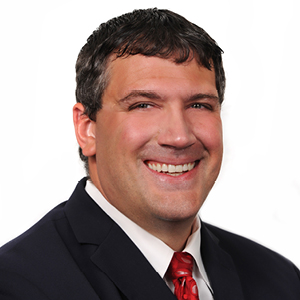Untie Ohio’s knotted local tax-and-government issue
Aug 13, 2025Crain’s Cleveland Business first published this opinion piece.
Legend holds that the Gordian Knot was so intricately woven that for centuries no one could untie it. Tired of trying, Alexander the Great drew his sword and cut it. His reward was eternal glory.
Today, Ohio homeowners and policymakers struggle with their own Gordian Knot of sorts — the state’s complex system of local government, public services, and escalating property taxes. The expensive tangle prevents young families from purchasing homes and threatens many fixed-income seniors with losing theirs.
Solutions have proven elusive, prompting a citizen-led effort to take Alexander the Great’s approach: a state constitutional amendment on the ballot to abolish local property taxes.
The General Assembly tried addressing some of these challenges in the budget bill, but Gov. Mike DeWine vetoed most of the reforms, and the House of Representatives has overridden only one veto. Subsequently, the governor appointed a Property Tax Reform Working Group to drum up more ideas for easing taxpayers’ short-term financial pain and fixing the long-term structural problem that inflicts it. Some may be skeptical, but the working group deserves a chance.
Voters must understand that abolishing property taxes will not be a no-cost solution. Every state levies property taxes for a reason — they pay for the local public services that residents expect: police forces, fire departments, public schools, road maintenance, libraries, parks, and health and human services. Eliminating property taxes would cost Ohio’s local governments roughly $24 billion a year. Replacing that lost revenue would require doubling state income taxes or else massive, unrealistic increases in local sales or income taxes. Those untenable options would cost Ohio jobs and competitive economic advantages.
Before repealing property taxes, The Buckeye Institute recommends several other policy solutions for the Property Tax Reform Working Group, Gov. DeWine and the General Assembly to consider instead.
For short-term taxpayer relief, the General Assembly should clarify statutory ambiguities and authorize local budget commissions to reduce their property tax rates prospectively when localities are projected to collect more than necessary to meet funding requirements. Many school districts, for example, maintain large carry-over balances at the end of the school year, sometimes more than a year’s worth of spending. And they are not alone.
Other local governments keep large cash hoards on hand while taxing residents at higher-than-needed rates. Voters may not always be aware of these local surpluses, so county boards and budget commissions should be authorized to align property tax rates with local fiscal realities.
For medium-term relief, the General Assembly should eliminate or amend the 20-mill floor for public schools and cap the inside millage growth rate at inflation’s pace. Taking these steps would prevent school districts from raising property taxes without voter consent, a travesty currently happening in more than half of Ohio’s 600-plus school districts.
In the longer run, Ohio must finally address its over-complicated, byzantine patchwork of more than 6,500 local governments and special districts with varying taxing authorities. Florida, by contrast, has fewer than 100 taxing districts despite having a much larger population and a faster-growing economy. Without transformational change to Ohio’s antiquated structure, homeowners will continue to suffer rising, unsustainable property taxes even if the state adopts short- and medium-term reforms.
Accordingly, policymakers should incentivize efficiencies to reduce local government expenses, encourage localities to share more public services, and then consolidate local jurisdictions to minimize administrative redundancies and improve resource allocation. Meanwhile, all local governments should join the Ohio Checkbook so their spending and operations are transparent, and local taxpayers can hold their public officials accountable.
Eliminating local property taxes is one way to untangle the Gordian Knot in Ohio’s tax system, and the anti-property tax movement may ultimately prevail. But without an alternative revenue stream at-the-ready, and without comprehensive, structural reform to the inherently inefficient local government system, Ohio’s reward will be short-lived.
The real answer to the knotty problem lies in taking short-, interim- and long-term strategic action to unwind the state’s overwrought municipal mass. Here’s hoping the governor’s designated working group takes that task seriously.
Greg R. Lawson is a research fellow at The Buckeye Institute.

